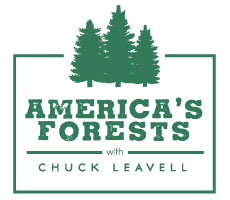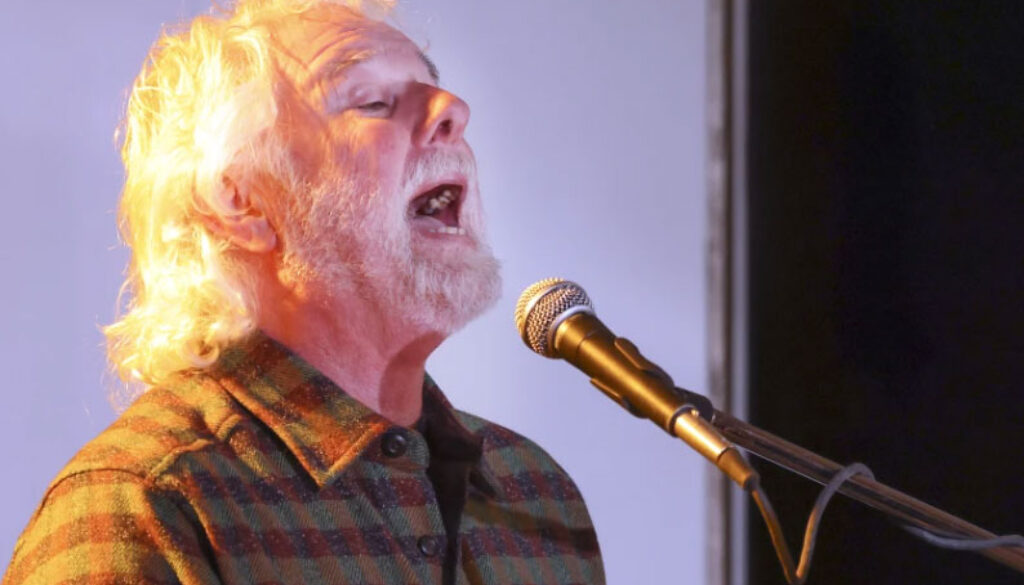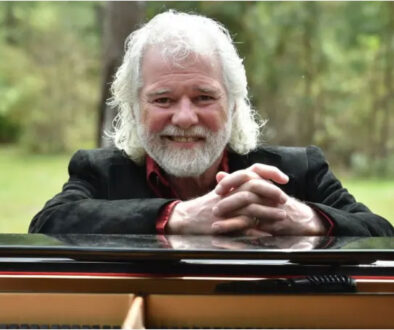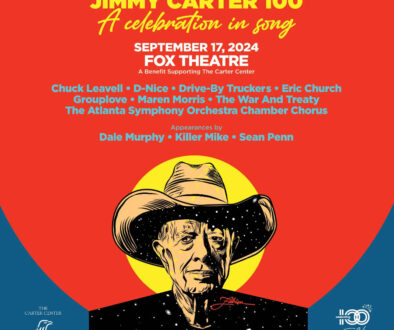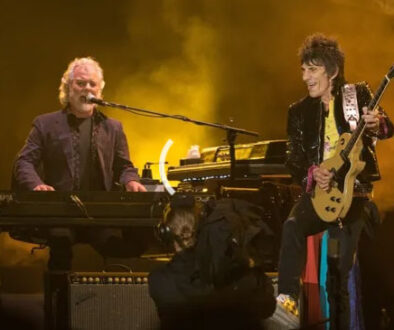Rolling Stones keyboardist taps Duluth band for Dylan cover
DULUTH — Not many people can say they’ve played “Like a Rolling Stone” with Bob Dylan and the Rolling Stones. Only one person can say he’s played the song with those artists as well as Big Wave Dave and the Ripples.
“It didn’t take me a minute and a half,” said Chuck Leavell about watching a video of the Duluth band, “to say yeah, these guys can play. He can sing. Let’s have some fun.”
That fun was had late Tuesday afternoon at Duluth’s Sacred Heart Music Center, where singer Dave Adams and seven bandmates joined Leavell to record a cover of Bob Dylan’s “Like a Rolling Stone” for an upcoming episode of the PBS series “America’s Forests with Chuck Leavell.”
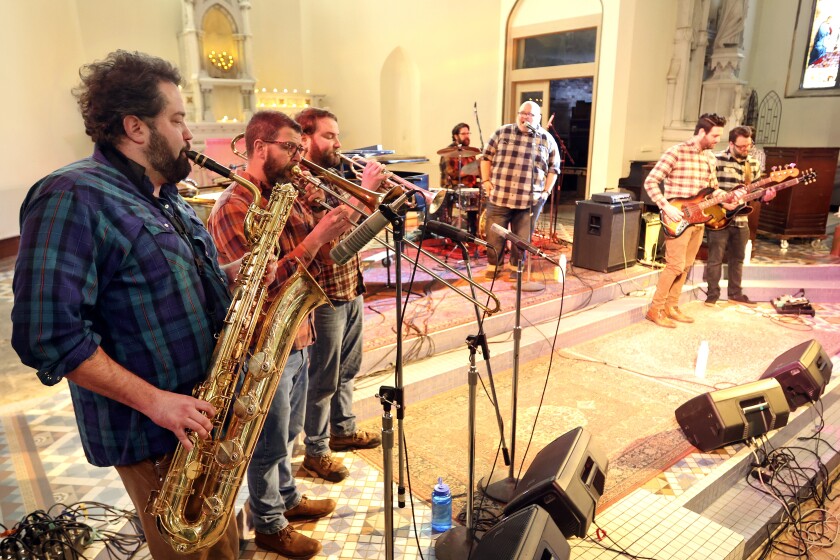
“We always try to have a musical segment,” said Leavell, who referred to northern Minnesota as “Dylan territory.” The Minnesota episode, he said, will spotlight the Nature Conservancy’s initiative Highway 61 Reforested . The name of that program echoes the title of Dylan’s classic 1965 album “Highway 61 Revisited,” which opens with “Like a Rolling Stone.”
Leavell may not be a household name on the order of Mick Jagger or Keith Richards, but he’s been an integral part of the Rolling Stones’ sound for the past 40 years as a keyboardist and music director, on tour and on record. Previously, he was a member of the Allman Brothers Band: That’s his buoyant piano on the beloved 1973 instrumental, “Jessica.”
He became interested in forestry, he said, after his wife inherited a thousand acres in 1981. Leavell studied forestry via correspondence courses while on tour with the Fabulous Thunderbirds, and the couple began managing their Georgia land as a forest. Over the decades, Leavell became a passionate advocate for forests, which he called “probably the most important natural resource that we have.”
“America’s Forests,” which debuted in 2017, sees Leavell visiting different regions of the country and talking with people engaged in using and preserving forestland. Leavell and his crew were in still-snowy Minnesota this week recording a winter episode, with hopes to make a second Minnesota visit in warmer weather.
“We haven’t done anything in the winter before,” said “America’s Forests” executive producer Bruce Ward. “That was a really high priority for us.”
On Monday, Leavell said, he and the show’s crew were at the Red Wing (Minnesota) Environmental Learning Center. By the time they made it to Duluth, a gathering snowstorm was threatening to give them a little more winter than they’d bargained for.
“We’re a little concerned about that weather report,” he said, but added, “we’ve learned that we have to be flexible” in making a show focused on the outdoors.
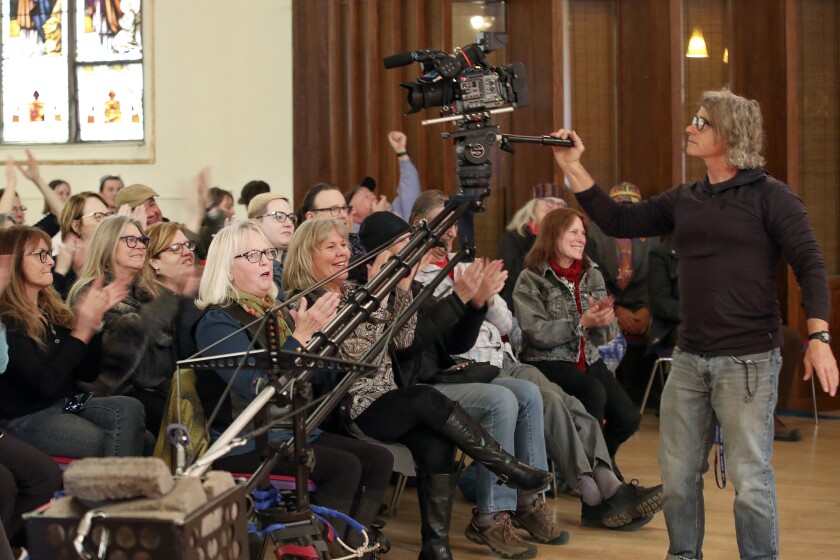
Everything was snug and dry at the historic Sacred Heart space on Tuesday, as a crowd of about 50 people who responded to a call put out by the venue watched Leavell and the Ripples run through an arrangement they were finalizing on the spot. “Right before your very eyes!” Leavell said with a laugh from behind the piano after a successful run-through.
Adams said that when he heard Chuck Leavell wanted to play a Bob Dylan song with the Ripples at Sacred Heart, “it sounded like a Mad Lib to me. We were all like, ‘What?’ But we were pretty excited to jump on the opportunity.”
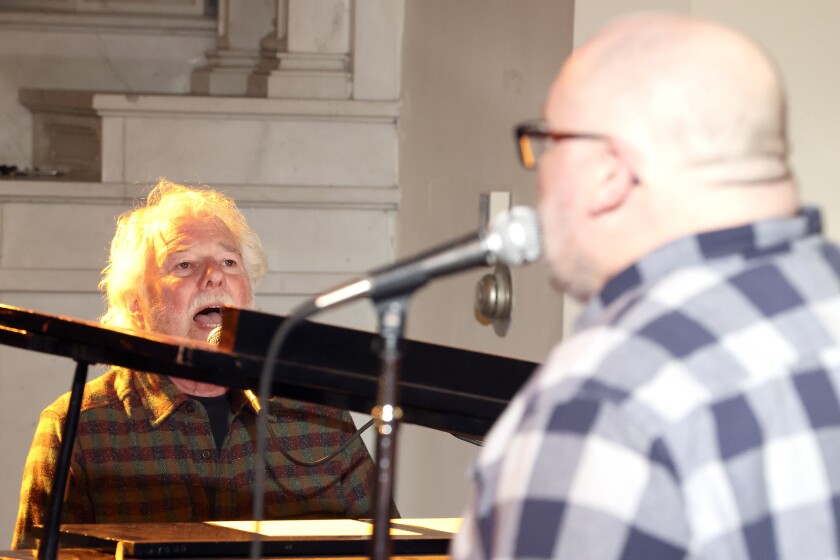
Leavell and Adams traded lines in their version of the song, an unlikely top five hit for Dylan given its relatively sprawling length of over six minutes. Leavell admitted he needed a lyric sheet, but trusted the audience to know the words to the song’s chorus when asked to join in at full volume for the song’s climax.
Producers also encouraged audience members to capture the single-song session with their own phones and cameras. The episode will be ready in the fall, Ward said — but that doesn’t necessarily mean stations will pick it up for broadcast.
“We have to do some advocacy to get the PBS stations to air it,” he explained. In other words, the more buzz the session generated, the better.
Arno Kahn, president of Sacred Heart Music Center, said the show’s producers connected with board member Mark Nicklawske through the Duluth Dylan Festival, where Nicklawske’s also on the board. Nicklawske suggested shooting either at Sacred Heart or the Duluth Armory, where Dylan saw Buddy Holly perform just days before Holly’s untimely death.
“But the Armory,” said Kahn, “the part that they would want to use is not heated or renovated. It’s pretty deteriorated on the upper floors. So they said no, that really is not going to work so well for what we’re trying to do.”
(In December 2021, the nonprofit Duluth Armory Arts and Music Center announced a partnership with developer George Sherman to renovate their historic venue, but the project will require several million dollars of state support that has yet to be secured.)

Standing in a venue just blocks from Dylan’s Duluth birthplace, Leavell said he’s met and performed with the Nobel laureate numerous times over the years, including on “several occasions” when Dylan has joined the Rolling Stones to play their namesake song onstage.
While Big Wave Dave and the Ripples have done Dylan’s “Maggie’s Farm,” Adams said, Tuesday was their first time tackling “Like a Rolling Stone.” The Rolling Stones’ arrangement served as a basis for the way the Ripples played it with Leavell.
Adams said it was “exhilarating” to take the stage with an artist like Leavell, and to represent Duluth for the benefit of a national audience. “I’ve always felt like we’ve had a really vibrant music scene in this town,” Adams said. “Any chance we can get to show that to the wider world is really good for us, and good for the town.”

Leavell, whose previous TV episodes have included two set in Wisconsin, said he appreciated the chance to visit the forests of northern Minnesota.
“You have a lot of maples up here. Aspens, birches and different species that would be indigenous. … it’s wonderful for me to be able to travel around and see these different forests and to learn about them and then to expose them to the general public,” he said.
In addition to the vocal version of “Like a Rolling Stone,” Leavell and members of the Ripples recorded a pared-down instrumental version that will be heard on the show while the camera travels along Highway 61. The full band version included solos from every member of a three-piece brass section, with Brian Wells on organ handling the hook famously improvised by Al Kooper during Dylan’s original sessions.
Once the arrangement was set, just before the cameras rolled, Leavell looked around at the band, standing on the former altar that now constitutes Sacred Heart’s stage.
“Everybody good?” he asked. “Any questions? You want to fire me?”
